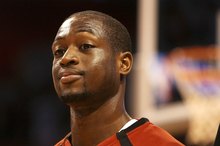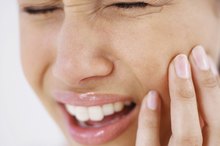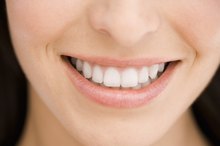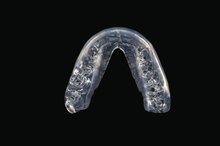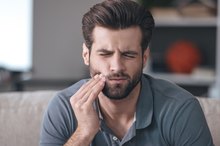Can I Play Sports After a Tooth Extraction?
Sports-related dental injuries affect all ages and all sports. Colliding with another player or the ground often causes broken teeth, lacerated tissues and teeth getting dislodged partially or completely. Teenagers may need to have wisdom teeth extracted. Whether planned or unplanned, resuming sports activity after tooth extraction will require planning and patience for a successful return to activity.
Why Teeth Come Out
The main reason athletes accidentally lose teeth is trauma to the face from the ground, another player, a bat or a hockey stick. In these cases, both the facial injury and the teeth need to heal. A broken tooth may not be salvageable by putting a crown on it. If the tooth is extracted in a young player, either a bridge or implant post is recommended to save the rest of the teeth.
- The main reason athletes accidentally lose teeth is trauma to the face from the ground, another player, a bat or a hockey stick.
- If the tooth is extracted in a young player, either a bridge or implant post is recommended to save the rest of the teeth.
Planned vs. Unplanned Extractions
Running After Having Your Wisdom Teeth Pulled
Learn More
Other than sports injuries, athletes between the ages of 16 and 20 will often have wisdom teeth extracted. This is a planned procedure and will often mean a week or two of rest after the procedure. It is important to allow the gums to heal, medicines to clear your body and swelling to subside before resuming exercise. Wait for your dentist or oral surgeon to clear your return to practice.
- Other than sports injuries, athletes between the ages of 16 and 20 will often have wisdom teeth extracted.
- This is a planned procedure and will often mean a week or two of rest after the procedure.
Recovery
You must follow the recommendations of your doctors before resuming activity. If you have extensive bone injuries in the face and jaw, you will likely have months of recovery ahead.
Gradual Return to Exercise
Dental Bridge Complications
Learn More
It is very important to let your body heal in the first week or 10 days. If your tooth extraction was relatively straightforward, wait a week while the bleeding stops and stitches pull the gums together. Keep your heart rate towards the lower end of your exercise range, and perform a long warm-up, short exercise session and long cool-down.
Prevention
Wear a mouth guard to avoid getting your teeth knocked out in the first place. ; August 2009'). However, any sport where a player may fall or collide with another person is a situation where preventing mouth problems is key. Mouth injuries are painful, expensive, and it is wise to make an effort to avoid them by taking preventive measures. Studies of football players show that even concussions can be reduced with mouth guards, notes the Centers for Disease Control and Prevention.
- Wear a mouth guard to avoid getting your teeth knocked out in the first place.
- ; However, any sport where a player may fall or collide with another person is a situation where preventing mouth problems is key.
Related Articles
References
- "ACSM's Primary Care Sports Medicine"; Douglas B. McKeag, et al., eds.; 2007
- "The Telegraph"; How Best to Get Your Teeth Back; Tim Jepson; March 2011
- Teeth eruption timetable. Cleveland Clinic. Updated October 22, 2019.
- Ghoncheh Z, Zade BM, Kharazifard MJ. Root morphology of the maxillary first and second molars in an Iranian population using cone beam computed tomography. J Dent (Tehran). 2017;14(3):115–122.
- Jung YH, Cho BH. Prevalence of missing and impacted third molars in adults aged 25 years and above. Imaging Sci Dent. 2013;43(4):219–225. doi:10.5624/isd.2013.43.4.219
- Von Cramon-Taubadel N. Global human mandibular variation reflects differences in agricultural and hunter-gatherer subsistence strategies. Proc Natl Acad Sci USA. 2011;108(49):19546-51. doi:10.1073/pnas.1113050108
- Fernandes MJ, Ogden GR, Pitts NB, Ogston SA, Ruta DA. Actuarial life-table analysis of lower impacted wisdom teeth in general dental practice. Community Dent Oral Epidemiol. 2010;38(1):58-67. doi:10.1111/j.1600-0528.2009.00501.x
- Anatomy and development of the mouth and teeth. Stanford Children's Health. Published 2020.
Writer Bio
Tina Bernstein started her professional writing career in 2011. A biomedical engineer and personal trainer certified through ACSM and NASM, she trains clients in Los Angeles to take control of their exercise and nutrition habits. Bernstein graduated from the University of Southern California with a master's degree in medical device engineering and works with companies to commercialize new medical technologies.
